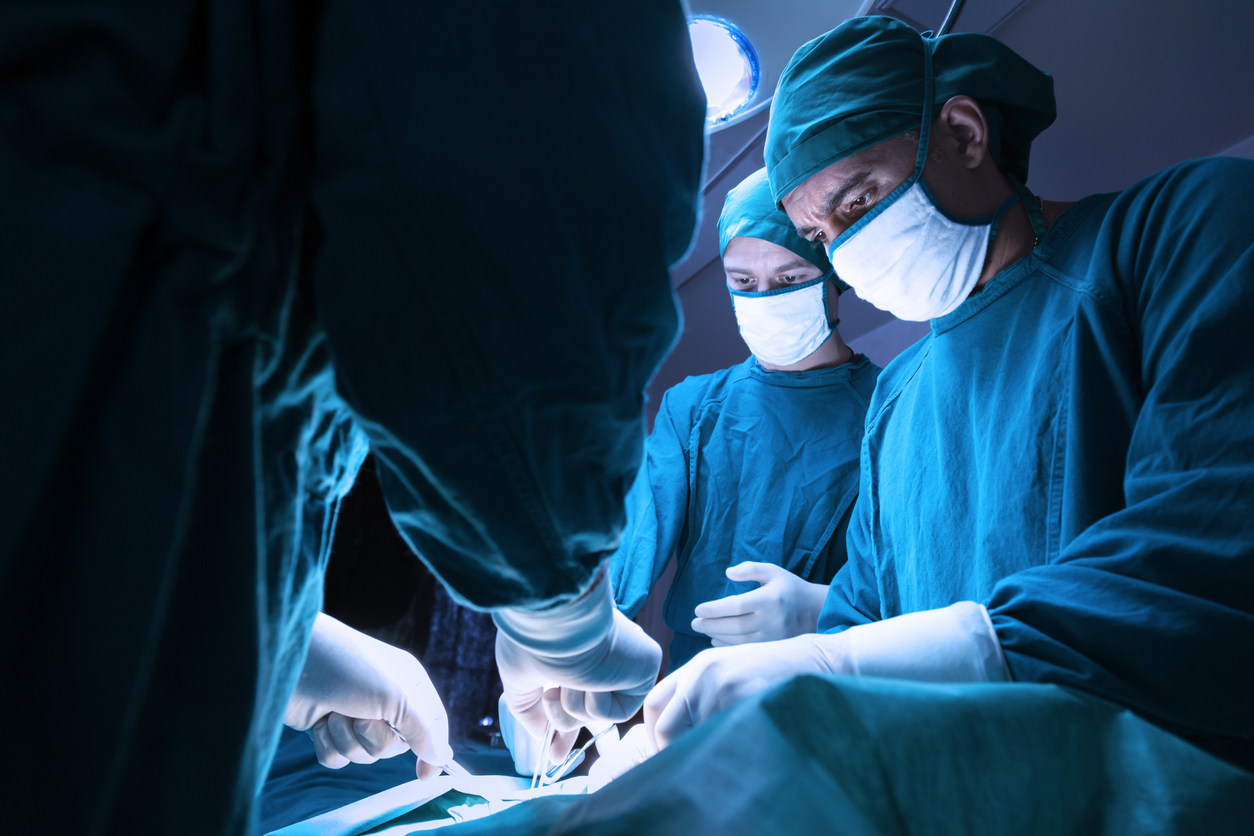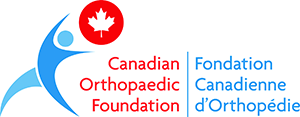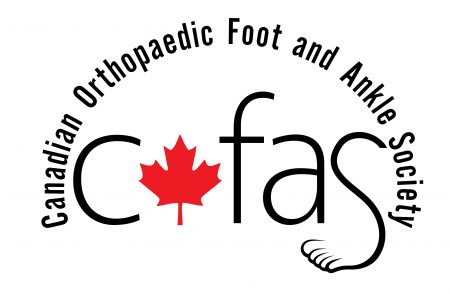
June 2025 Edition — COA BulletinResearch Innovations
Featuring subspecialty breakthroughs, notable papers, and research advancements. Discover the groundbreaking studies and innovations that are redefining musculoskeletal care.
From Athena to Samson: The Ongoing Journey of Dr. George Grammatopoulos, 2025 J. Édouard Samson Award Winner
 Todd Charlebois
Todd Charlebois
CEO, Canadian Orthopaedic Foundation
For a young boy, growing up in the shadow of the Athenian Riviera, Greece, to imagine finding himself facing the bite of a Canadian winter on its coldest corner, Sparks and Elgin in Ottawa, is fantasy. Some might say lunacy. Yet it is where we find Dr. George Grammatopoulos, a staff orthopaedic surgeon on the Arthroplasty and Hip Preservation Team and an Associate Professor at the University of Ottawa.
Dr. Grammatopoulos is the recipient of the Canadian Orthopaedic Foundation’s J. Édouard Samson Award, our highest award for excellence in research, recognizing a 5-year body of work for “The Hip- Spine Interaction in Hip Arthroplasty: Defining its Importance and Identifying How Best to Incorporate it into Surgical Practice”.
We recently sat down to record an episode of the COF’s Podcast, ORTHOLINK. Here is some of what we discussed.
Q: Dr. Grammatopoulos, how does a young boy find his way from Athens, Greece, to The Ottawa Hospital?
A: As a kid, I was into basketball and was never a particularly serious student — at least not until my parents made a big investment and sent me to a boarding school to finish my secondary education in England. I felt a responsibility to take it seriously, knowing they were essentially gifting me post-secondary education. I focused, obtained high marks and eventually completed medical school in the U.K. It was during my residency at Oxford that I realized that I wanted to be a hip surgeon. Later, I went on to complete a phenomenal fellowship in Ottawa and I fell in love with the place. After finishing my time in London, I returned with my family in 2018.
Q: We are so proud to have you as our Samson Award winner. You looked at the interaction of hip and spine from a holistic perspective in your research. Why?
A: First, let me say how grateful I am for this recognition from the Canadian Orthopaedic Foundation—it’s truly an honour. Regarding the research, everything in the human body is interconnected. Of course, the goal is always to improve surgical outcomes, but beyond the technical “how” of procedures, there’s also a patient-specific mechanical aspects to consider.
With the hip, how the ball and socket behaviour is crucial to how the joint functions overall. Since the socket is part of the pelvis, the relationship between the spine and pelvic movement becomes key. To understand one, you must study the other. So, a comprehensive assessment of the spine and the pelvis are critical to the success of any hip surgery.
Q: As you undertook your research, was there anything that surprised you?
A: Yes — mainly the fact that there is no “one size fits all” solution. I was surprised by the degree of variability in what we consider “normal”. For example, when we tried to define what’s “normal”, in terms of movement or anatomy, we found that it varies significantly from person to person. Understanding and accounting for these individual differences is essential for achieving the best outcomes, and that variability really caught me off guard.
Q: What would you say is the connection between research and impact on quality of life for patients dealing with orthopaedic challenges today?
A: First of all, total hip replacement is one of the most successful procedures in all of medicine. But there is always room for improvement. Even over the past five years, we’ve seen meaningful improvements. For instance, in patients with both hip and spine issues, the rate of joint dislocation – where the ball separates from the socket – can be as high as 5%. By identifying patients at risk and tailoring our approach, we’ve been able to mitigate those occurrences down to as low as one percent. That’s a clear, near-term example of how research directly improves quality of life.
Q: Dr. Grammatopoulos, you recently joined the Canadian Orthopaedic Foundations’ Team Canada initiative to drive more investment into research by Canadians in partnership with industry. What do you see as being an advantage unique to Canada when considering it for research investments?
A: I am honoured to be a part of Team Canada. What really sets Canada apart is the way that research is approached here. There is a strong spirit of collaboration among researchers, and patients are incredibly engaged. I have never seen patient buy-in at the level that exists in Canada. These uniquely Canadian qualities lead to well-rounded, unbiased discoveries that simply wouldn’t be possible elsewhere. I am genuinely excited about the opportunities ahead to further advance orthopedic research and innovation.
Listen to the full ORTHOLINK episode and interview with Dr. Grammatopoulos, click on the video below.
- To learn more about the COF’s research funding opportunities, visit movepainfree.org.
- To connect with Dr. Grammatopoulos via e-mail, contact Isabel Horton ihorton@ohri.ca
What’s New in COFAS Research?
 Mansur Halai
Mansur Halai
Research Chair, Canadian Orthopaedic Foot and Ankle Society
St. Michael’s Hospital, University of Toronto
The Canadian Orthopaedic Foot and Ankle Society (COFAS) continues to establish its global presence in advancing foot and ankle research. This legacy is rooted in the commitment of its founding members, whose landmark trials and practice-guiding publications have elevated COFAS to international recognition in areas such as ankle arthritis, ankle replacement, and hindfoot arthrodesis.
Since stepping into the role of Research Chair in 2023, my priority has been to initiate a multi-centre randomized study that reflects the collective priorities of our COFAS membership. While other groups—like our colleagues in the United Kingdom—were producing high-quality trials such as the TARVA study (ankle replacement vs. fusion), we recognized the importance of first understanding the direction our own members wished to take.
In early 2024, we distributed two surveys to COFAS members and hosted an in-person Think Tank to identify shared research priorities. With strong support from COFAS President Dr. Warren Latham and consistent research-focused updates during our executive meetings, we created momentum for national collaboration. Recognizing the success of the Canadian Orthopaedic Trauma Society (COTS), we’ve actively sought opportunities to collaborate—such as contributing COFAS surgeons to the PILON Study led by Professor Emil Schemitsch. This collaboration provides a valuable model for how COFAS can build and lead future randomized trials.
Throughout the past year, COFAS has made a concerted effort to foster research engagement across the country. Extra in-person meetings have been held in Toronto, Whistler, and Ottawa, complemented by a standout session during Subspecialty Day at the COA Annual Meeting in Halifax. We also hosted our first-ever COFAS Travelling Fellows, with visits from international fellows from the Netherlands and Chile, adding global perspective to our academic sessions and journal clubs.
As we continue to build on our foundational work in arthritis, two new research priorities have emerged from member input. The first is the management of diabetic Charcot foot, with a focus on minimally invasive techniques. The second is the development of Canada’s first minimally invasive forefoot database—currently underway in Toronto and Halifax—which will complement the well-established ankle arthritis national database.
Over the past year, we’ve made significant progress through regular meetings and early-stage implementation. Industry partners have shown interest in supporting this work, particularly in helping community surgeons participate in data collection. It’s a slow but rewarding process—one that lays the groundwork for future research initiatives across the country.
References
- Goldberg AJ, et al. Total Ankle Replacement Versus Arthrodesis (TARVA): A Randomized Controlled Trial. Bone Joint J. 2019;101-B(6):680–689.
- Canadian Orthopaedic Trauma Society (COTS). https://cots-trauma.org
- PILON Study, Principal Investigator: Dr. Emil Schemitsch, London Health Sciences Centre, Ontario.
- Daniels T, Younger A, Glazebrook M. Foundational Research Contributions of COFAS Members.
- Canadian Orthopaedic Association Subspecialty Day, Halifax 2024.

